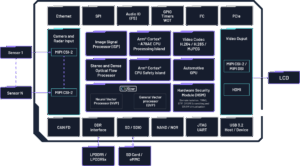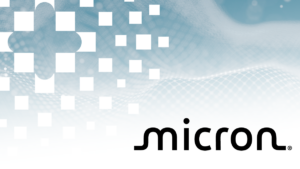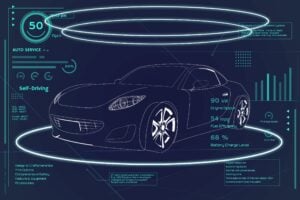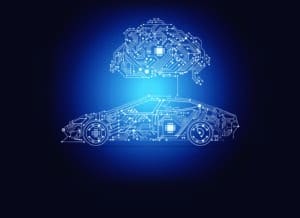Automotive Applications for Embedded Vision
Vision products in automotive applications can make us better and safer drivers
Vision products in automotive applications can serve to enhance the driving experience by making us better and safer drivers through both driver and road monitoring.
Driver monitoring applications use computer vision to ensure that driver remains alert and awake while operating the vehicle. These systems can monitor head movement and body language for indications that the driver is drowsy, thus posing a threat to others on the road. They can also monitor for driver distraction behaviors such as texting, eating, etc., responding with a friendly reminder that encourages the driver to focus on the road instead.
In addition to monitoring activities occurring inside the vehicle, exterior applications such as lane departure warning systems can use video with lane detection algorithms to recognize the lane markings and road edges and estimate the position of the car within the lane. The driver can then be warned in cases of unintentional lane departure. Solutions exist to read roadside warning signs and to alert the driver if they are not heeded, as well as for collision mitigation, blind spot detection, park and reverse assist, self-parking vehicles and event-data recording.
Eventually, this technology will to lead cars with self-driving capability; Google, for example, is already testing prototypes. However many automotive industry experts believe that the goal of vision in vehicles is not so much to eliminate the driving experience but to just to make it safer, at least in the near term.

Ambarella’s CV3-AD655 Surround View with IMG BXM GPU: A Case Study
The CV3-AD family block diagram. This blog post was originally published at Imagination Technologies’ website. It is reprinted here with the permission of Imagination Technologies. Ambarella’s CV3-AD655 autonomous driving AI domain controller pairs energy-efficient compute with Imagination’s IMG BXM GPU to enable real-time surround-view visualisation for L2++/L3 vehicles. This case study outlines the industry shift

NVIDIA Advances Open Model Development for Digital and Physical AI
This blog post was originally published at NVIDIA’s website. It is reprinted here with the permission of NVIDIA. NVIDIA releases new AI tools for speech, safety and autonomous driving — including NVIDIA DRIVE Alpamayo-R1, the world’s first open industry-scale reasoning vision language action model for mobility — and a new independent benchmark recognizes the openness and

China’s Autonomous Trucks Now Log Over One Million Kilometers Daily
This blog post was originally published at IDTechEx’s website. It is reprinted here with the permission of IDTechEx. To gain deeper insights into the rapidly accelerating market for autonomous trucks in China, IDTechEx recently visited Inceptio Technology, a leading Chinese autonomous trucking company. Across the global autonomous vehicle landscape, commercial trucks are emerging as one of the first

Public road demonstration tests of the latest autonomous driving EV bus, including nighttime operation, have begun at a hot spring resort
Following on from last year, Macnica, Inc., Fukuyama Consultant Co., Ltd., and KCS Corporation will collaborate with Ureshino City, Saga Prefecture, to conduct a public road demonstration experiment of autonomous driving vehicle (autonomous driving level 2) through co-creation with the local community, and will verify the degree to which autonomous driving will contribute to the

Micron Ships Automotive UFS 4.1, Designed to Unlock Intelligent Mobility With Speed, Safety and Reliability
Architected to power AI workloads, Micron’s latest automotive solution, built with G9 NAND, equips the industry to create safer, smarter more connected driver experiences MUNICH, Nov. 13, 2025 (GLOBE NEWSWIRE) — Automotive Computing Conference — Micron Technology, Inc. (Nasdaq: MU), today announced shipping of qualification samples of its automotive universal flash storage (UFS) 4.1 solution to

Automotive radar industry: China’s acceleration and the next wave of sensing
This market research report was originally published at the Yole Group’s website. It is reprinted here with the permission of the Yole Group. With volumes rising and semiconductor innovation accelerating, Yole Group delivers a dual analysis on automotive radar technology, market dynamics, and chipset design. Key Takeaways 166 million radar modules shipped globally in 2024;

NXP Completes Acquisitions of Aviva Links and Kinara to Advance Automotive Connectivity and AI at the Intelligent Edge
EINDHOVEN, The Netherlands, Oct. 28, 2025 (GLOBE NEWSWIRE) — NXP Semiconductors N.V. (NASDAQ: NXPI) has announced the completion of its acquisitions of Aviva Links, and Kinara. On October 24, 2025, NXP closed the previously announced acquisition of Aviva Links for $243 million in cash before closing adjustments. Aviva Links is a provider of Automotive SerDes Alliance (ASA)

AI Drives the Wheel: How Computing Power is Reshaping the Automotive Industry
This market research report was originally published at the Yole Group’s website. It is reprinted here with the permission of the Yole Group. In its new report, Automotive Computing and AI 2025, Yole Group analyzes the technological and market forces redefining vehicle intelligence, safety, and connectivity. The automotive industry is accelerating into a new era

“Three Big Topics in Autonomous Driving and ADAS,” an Interview with Valeo
Frank Moesle, Software Department Manager at Valeo, talks with Independent Journalist Junko Yoshida for the “Three Big Topics in Autonomous Driving and ADAS” interview at the May 2025 Embedded Vision Summit. In this on-stage interview, Moesle and Yoshida focus on trends and challenges in automotive technology, autonomous driving and ADAS.… “Three Big Topics in Autonomous

“Toward Hardware-agnostic ADAS Implementations for Software-defined Vehicles,” a Presentation from Valeo
Frank Moesle, Software Department Manager at Valeo, presents the “Toward Hardware-agnostic ADAS Implementations for Software-defined Vehicles” tutorial at the May 2025 Embedded Vision Summit. ADAS (advanced-driver assistance systems) software has historically been tightly bound to the underlying system-on-chip (SoC). This software, especially for visual perception, has been extensively optimized for… “Toward Hardware-agnostic ADAS Implementations for

